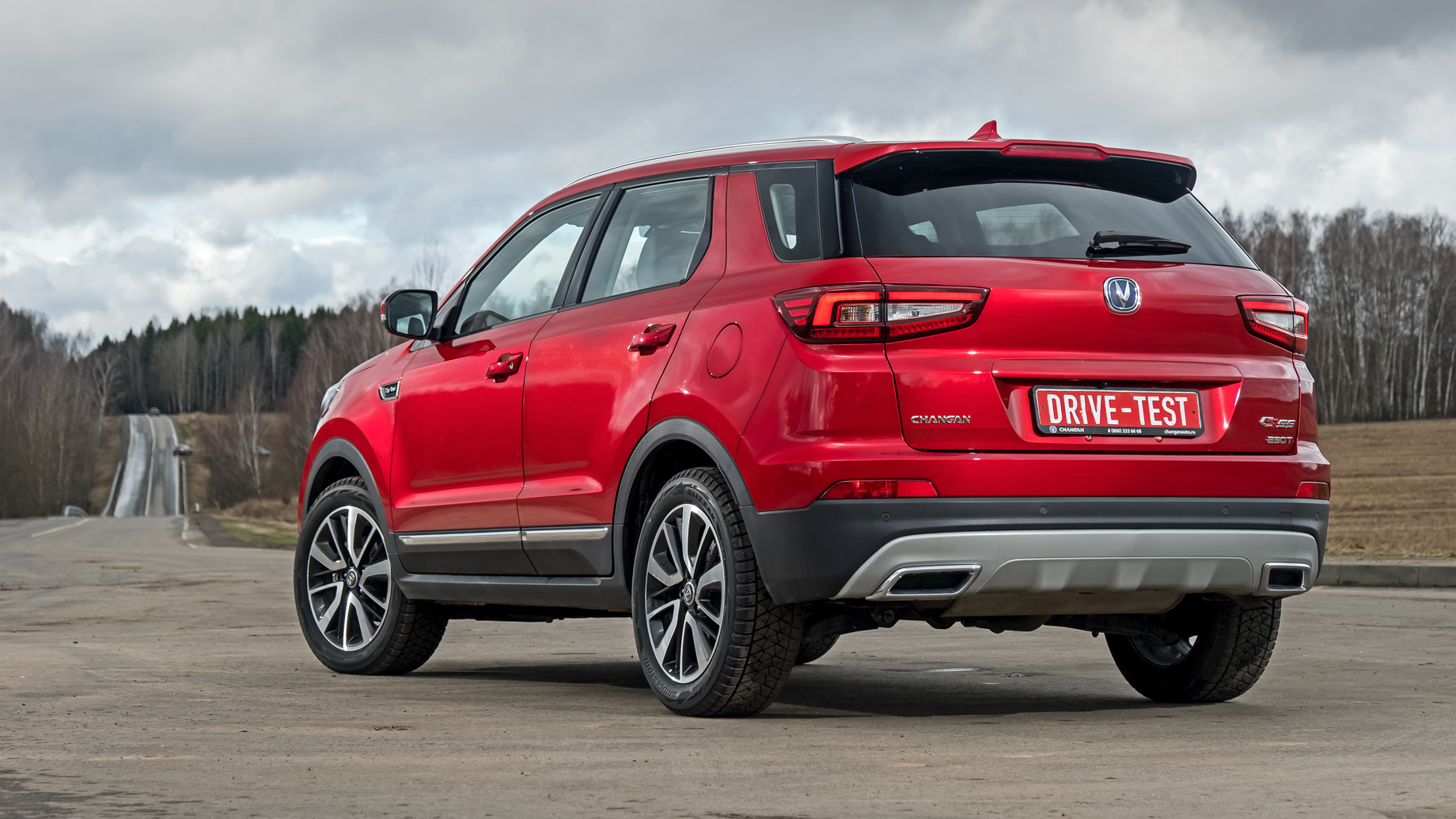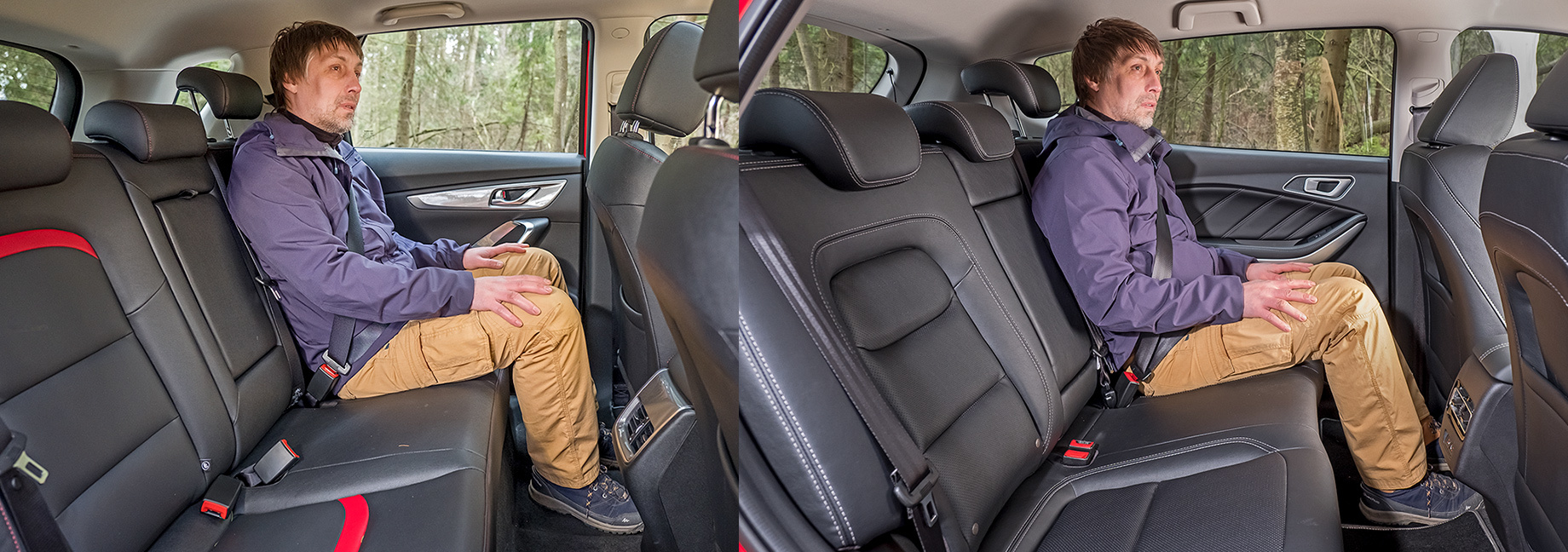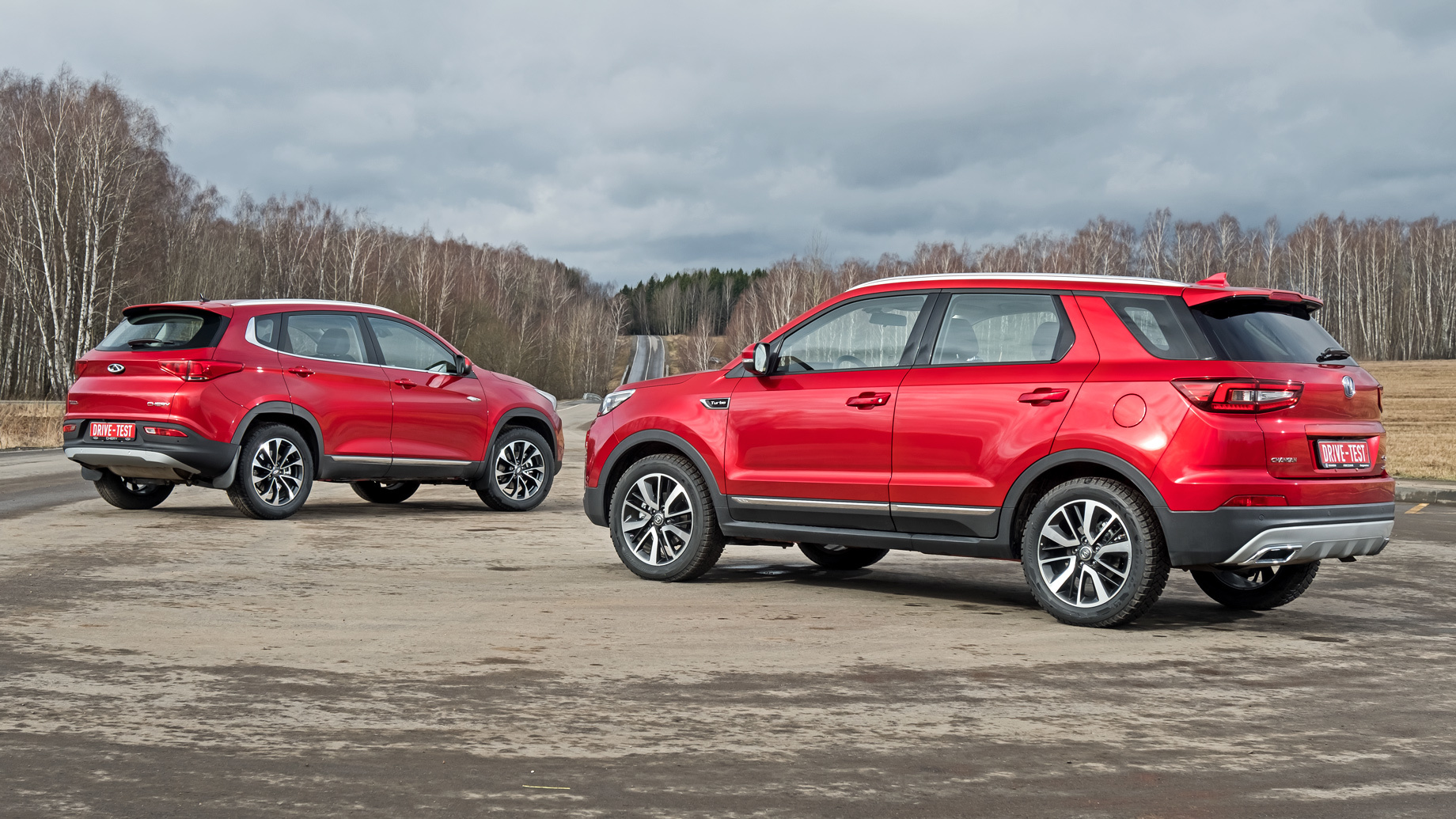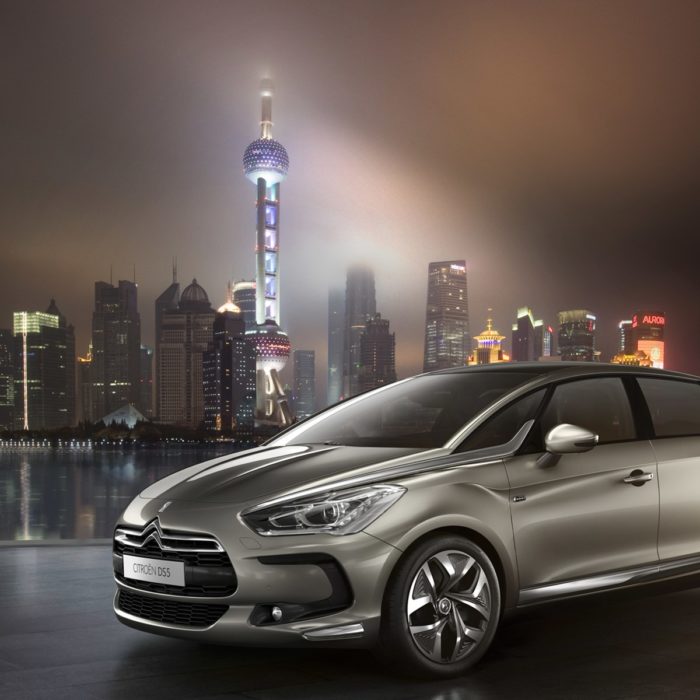Specifying the difference between the Chinese Changan CS55 and Chery Tiggo 7
The first impression: seeing double. The Changan CS55 and the Chery Tiggo 7 crossovers are similar in size, painted as if from the same can and decorated according to a single canon right down to the plastic lining of the lower perimeter. But the Chery is cheaper. The test uses two-pedal top versions. According to statistics, buyers of Chinese technology are not stingy, choosing rich equipment many times more often than simplified ones.
If you are confused by the country of origin, just cover the emblem with your palm. Without a “bird” on the grille, the CS55 will pass for some SsangYong or even Kia. The slope of the C-pillar makes the Changan look like a thoroughbred Discovery Sport. And you can’t blame plagiarism: non-obvious borrowings are successfully inscribed in the image of a weighted average modern SUV. Not original, but not fake either.

Still, the quality of workmanship should be brought up to the world level. I can turn a blind eye to the difference in the gaps between the doors and the slight distortion of the trunk lid. However, due to the uneven thickness of the mother-of-pearl glaze, bald spots glow on the body of Changan. And the lack of paint on the inner edges of the body directly indicates parsimony. The absence of an additional payment for such “metallics” is of little consolation.
Tiggo 7 is better assembled, no worse than, for instance, Korean cars. In appearance, created by James Hope, who had already retired from Chery, there were no explicit quotes, although the “seven” cannot be called original. It is mainly the selection of power units that causes bewilderment. The base crossover with mechanical gearbox is equipped with a modern half-liter turbo engine with a capacity of 152 hp, while under the hood of expensive versions with a CVT an old two-liter aspirated engine developing 122 forces is left.
When moving up the Tiggo 7 model range, the buyer also loses comfortable chairs with fabric upholstery. And the seats of the Elite and Elite Plus versions trimmed with perforated leather cloth are too soft and shapeless. The problem of the driver’s landing is complicated by the steering column without adjustment for reach. And forward visibility is hampered by wide pillars. At the same time, large side mirrors provide good control of what is happening behind.
The Tiggo has a surround view system with blind spot monitoring around the front wheels. The cameras in the mirror housings are activated when the turn signal is turned on. A good help when maneuvering in tight parking lots, even despite the mediocre picture quality. In addition, at night, when the steering wheel is deflected, additional cornering illumination is activated. And both fog lights flash at once, covering the entire sector in front of the hood.

The CS55 has a single side camera that monitors the right side and is forcibly activated by a button next to the transmission selector. However the A-pillars are thinner, and the coverage of the side mirrors is even wider. But the look of the front seats is annoying: the upholstery seems to be assembled from leather cloth scraps of different shades, connected in places by uneven seams. But the filler here is denser, the pillow is longer, and the back profile is more fitting — it’s comfortable to sit. Partly owing to the ability to push the steering wheel towards you.
The ergonomics of Changan is generally commendable. The inclined display of the media system, contrary to expectations, does not glare in the sun. Dual-zone climate control is organized logically. Alas, after overnight parking, the interior warms up for a long time, and on trips it is constantly supercooled by charges of cool air. Looking at the details, I understand why the interior of the CS55 was updated at home just a year and a half after the premiere. Only on the front panel, I counted seven varieties of plastic: from rather nice to frankly cheap.
The semi-automatic air conditioner of the Chery runs more stably, and the finishing materials are of higher and more stable quality. A large informative display is successfully inscribed between odd analog scales. Chery does not skimp on auto mode for all power windows. At night, the front and side panels are enlivened by backlighting. It’s a pity it wasn’t enough for the glove compartment. And shame on those who tucked the main USB connector into a hard-to-reach niche under the console. The mission of connecting the phone is impossible.
With a wheelbase matching up to a millimeter, the rear seats of the CS55 are tighter. There is a little less space in front of the knees. Because of the sunroof, the gap overhead is very small. In addition, the harsh pillow filler does not provide the same comfortable fit as the soft Tiggo seats. Heating of the sofa in the “fifty-fifth” is not provided, and in the “seventh” it is two-stage, starting with the Elite version. However, the second-row passengers of the Chery are deprived of a USB connector, although in Changan it is located next to the ventilation vents.

The CS55 turbo engine is 21 horsepower and 30 N•m superior to the aspirated one of the Tiggo. This is felt both at partial charging and at full throttle. And sensitive reactions to the addition of thrust enhance the feeling of advantage. Automatic gearbox connects the motor well with the drive wheels, the gear changes are quick and barely noticeable. But having demanded a kickdown on the go, you will still encounter a hitch of a couple of seconds while the box is determined with the transfer.
Attempts to spur Chery in pursuit of a vigorous opponent turn into deviations in the variator operation. In Eco mode, under full throttle, the engine makes a monotonous buzzing. Sport mode reduces the delay between fuel delivery and acceleration and is better suited for pursuit. But for driving in heavy traffic, it is harsh, and even more so for pushing in traffic jams. The Tiggo gearbox does not offer something in between.
In search of harmony, you should calm down. Slow down to a steady pace, return to the standard CVT program — and the problems are gone. If you do not torment the Tiggo with intense acceleration, then there seems to be nothing to criticize the transmission for. The responses to the smooth movement of the accelerator are optimal, the speed does not exceed comfortable values. And the dynamics can not be called quite sluggish. But driving at low revs, when you have to hold the crossover with a brake, the box twitches, as if the torque converter clutch is acting up.
The Tiggo 7 chassis was built with the participation of the engineering department of Lotus, which is not directly related to the manufacturer of the sports cars of the same name. Therefore, if a school is felt in Chery, it is only in moderate and gradually increasing rolls, as well as in a progressive change in the return force on the steering wheel when changing the steepness of the turn. But whoever did the steering adjustment, he left this business halfway. In small angles, the electric amplifier lives its own life: the steering wheel sometimes becomes too heavy, resisting the exit from zero, then it suddenly becomes empty.

I would call the handling of the Chery good. But its downside is a tough move on a bumpy road. The Tiggo suspension does not tolerate large pits, tram tracks and other transverse irregularities. The heavy 18-inch wheels that come with all versions, including the base Sport, add shakers.
I change to Changan — and it’s like a skating rink passed along the worndown road. The suspension is so successful in dealing with potholes of various sizes that at some point you simply stop paying attention to the quality of the pavement. You have to go around only especially large pits, and it is better to prepare for such maneuvers in advance. In speed slalom, the CS55 is not strong. Even though the steering wheel is informative — the deepest rolls, indecently early drift and a panic-set stabilization system completely discourage the desire to scorch.
Scarce official information does not allow us to count on chassis upgrades during last year CS55 update. The Chinese only report changes in the exterior, interior, and the electric version of the E-Rock, which is out of date for us, with a 373-mile power reserve. It is known that the restyled “fifty-fifths” will not come into the market before winter, and before the end of the year such crossovers as a test one will be sold. With a good ride, acceptable noise isolation and inexpressive handling.

It remains to be hoped that the assembly and coloring flaws will be eliminated sooner. It would be nice to equip the top version of the CS55 with a heated steering wheel, windshield and rear seats. Without these important little things, giving impressive sums for Changan seems unjustified generosity. If only because the Tiggo 7 has the winter equipment listed above, included in the Elite version. By choosing a Luxury version comparable to Changan in terms of equipment, you can already save money. Are you ready to give up driving comfort and dynamics for $4,000?
This is a translation. You can read the original here: https://www.drive.ru/test-drive/changan/chery/5e7b50fcec05c4fa45000014.html






